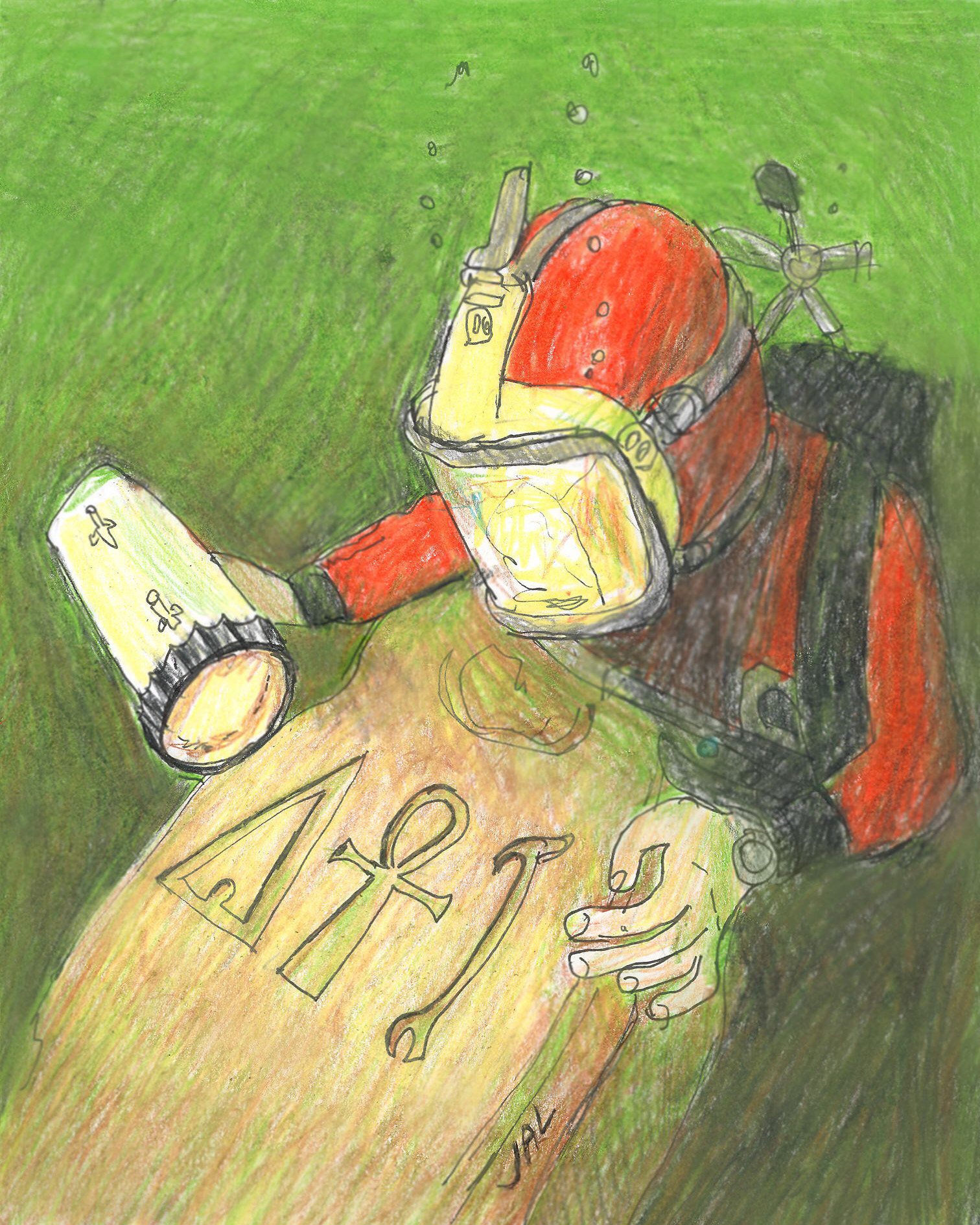|
Deep Sea Diver finds an Egyptian stele long 'buried' in the sea.
I was fascinated by a link to "In pictures: Egypt's sunken treasures". I wanted to learn more, and followed another link to the Martin Gropius Bau, the Berlin museum which is hosting the exhibition. While there, I looked for pictures. Alas, while there, I found no picture gallery, but promise of "Unterwasserfotos" in the 'Katalog' they had for sale. Amused that I could read this word in German, I told Julia about the 'under water photos'. Naturally, Julia told me this similarity is because English has Germanic roots. After she said that, I'd remembered reading somewhere of this, but I quickly forgot it. And indeed, the earliest English has a "Germanic heritage in vocabulary, sentence structure and grammar"
Meanwhile, I wanted to see those 'Unterwasserfotos', and I kept digging until I found some. One of a deep sea diver investigating a stele with the royal insignia of the pharaoh Apries (589-570 BC) fascinated me, so I drew it.
On the stele, you can see the Ankh, for 'life', and the Was scepter which symbolizes 'power'. The triangular symbol means 'to give', so this phrase means
'to give life and power'
When I showed Julia this picture, she said the symbols look like they read 'ART'. I thought the same thing after I'd finished it.
Maybe good art DOES 'give life and power'.
|



